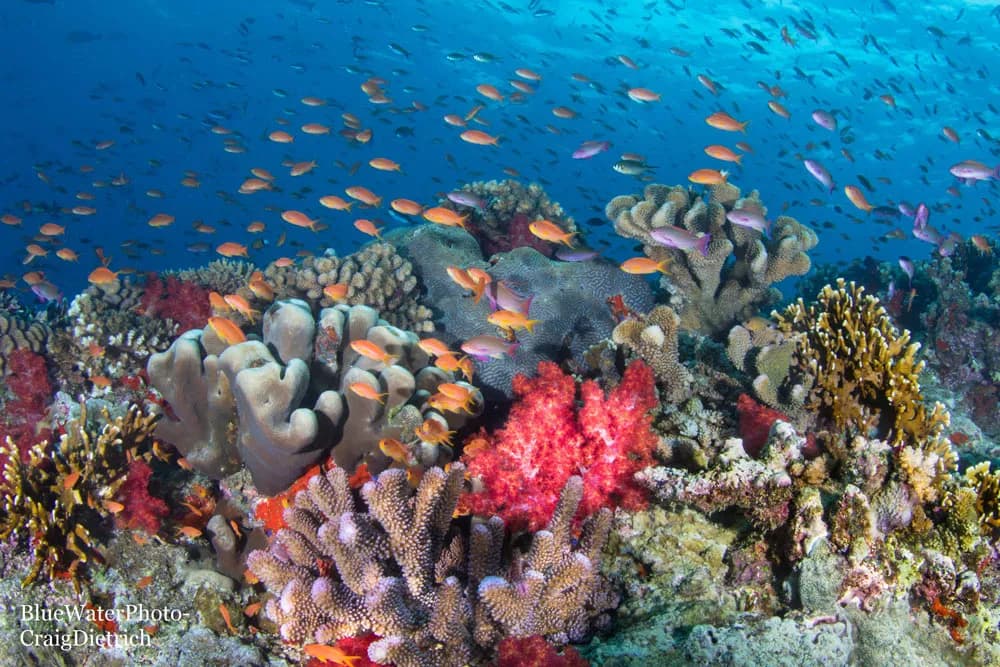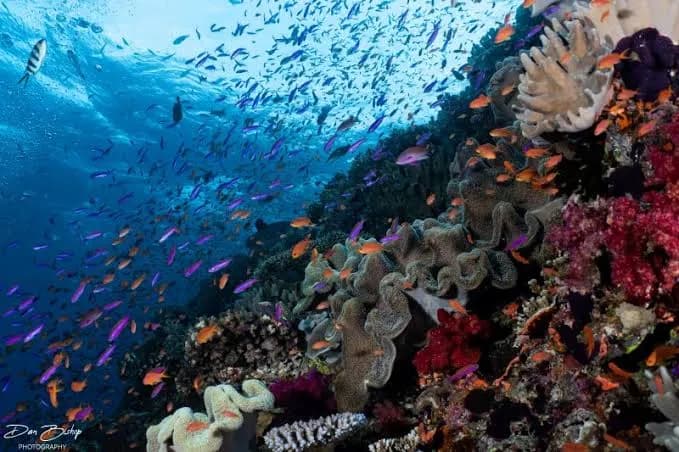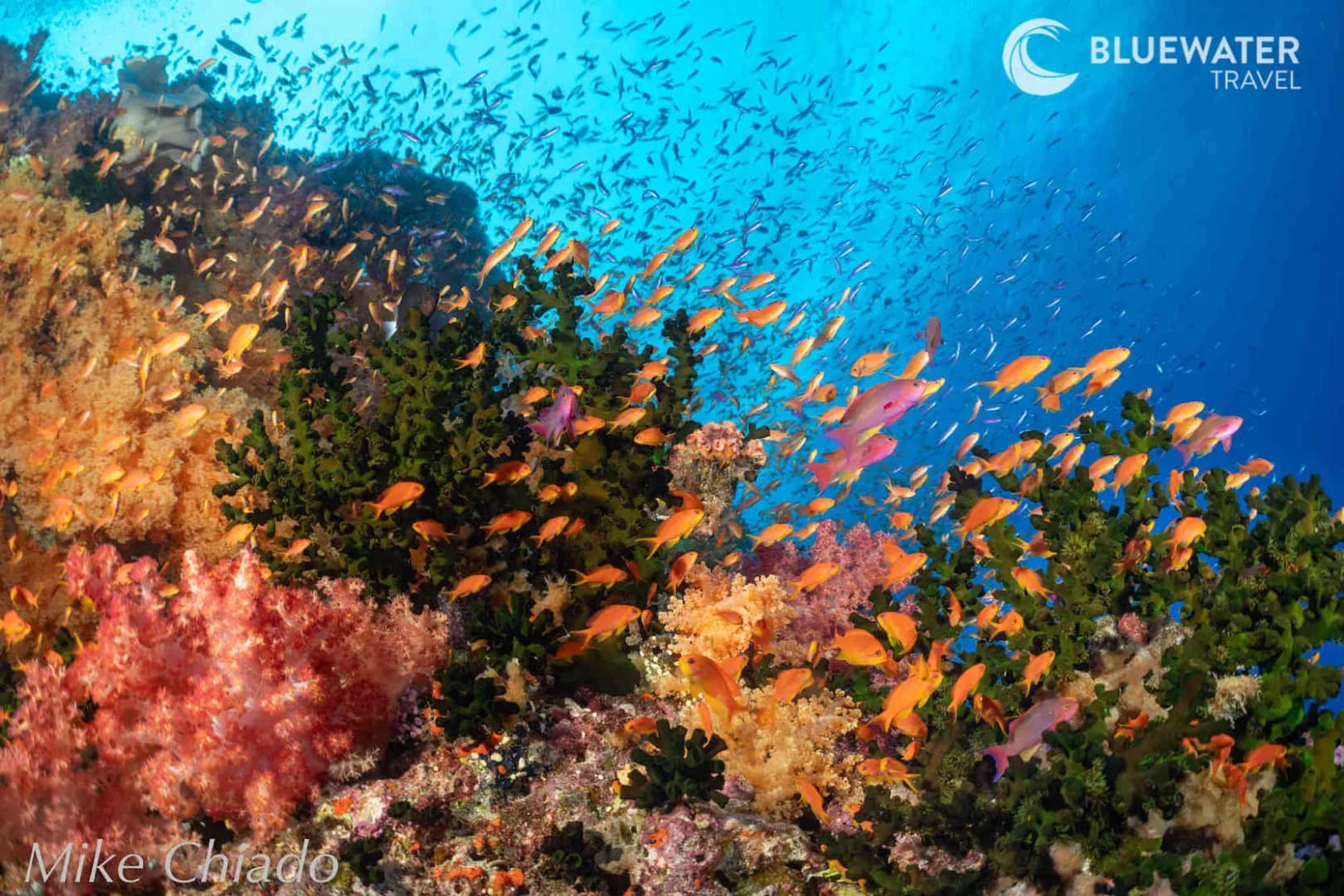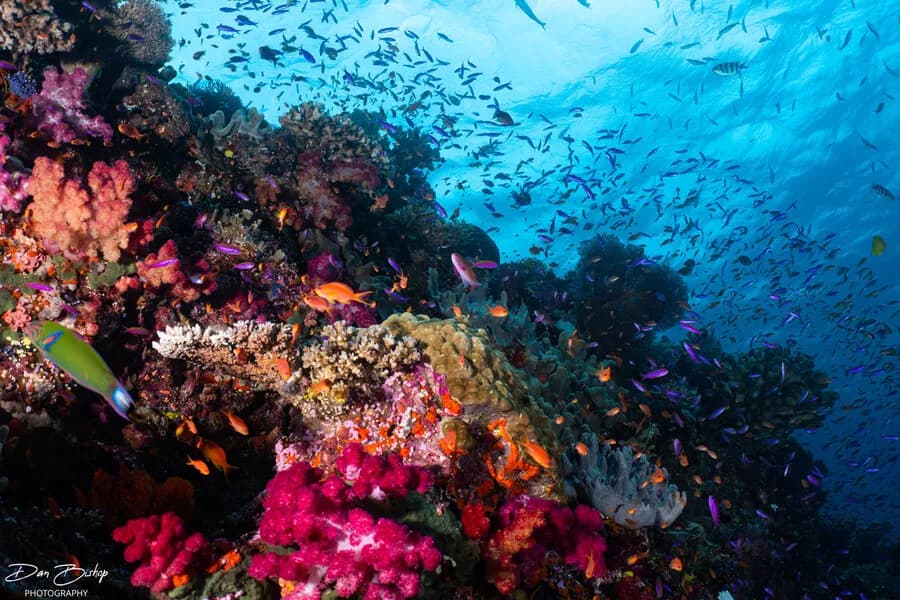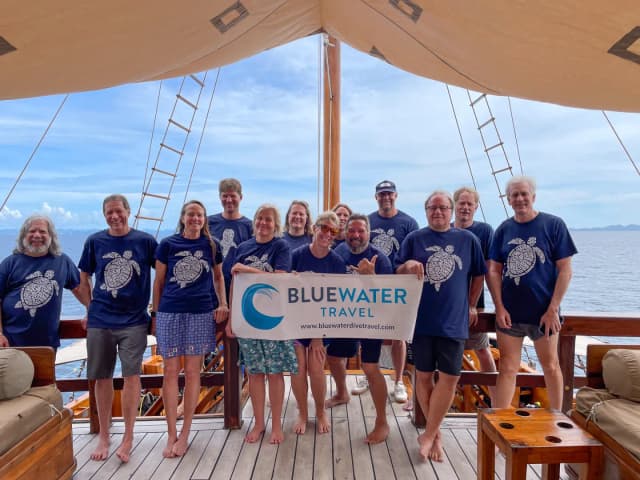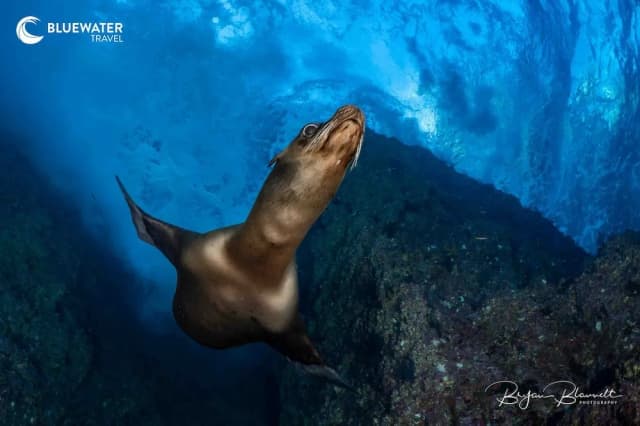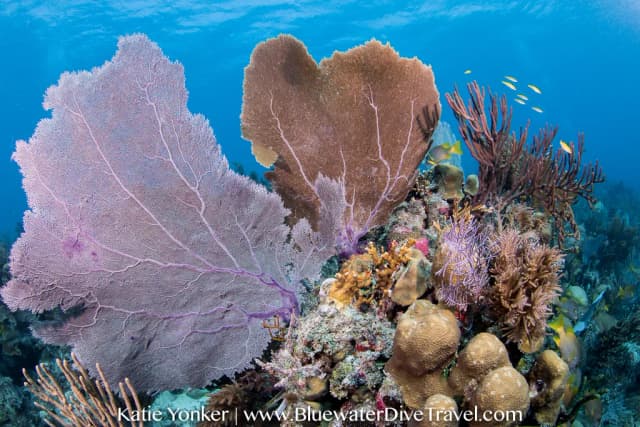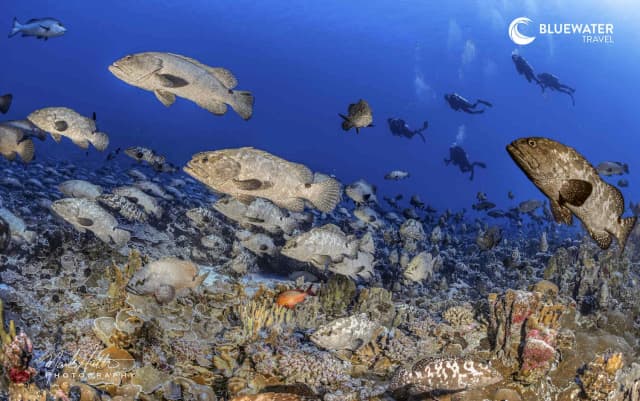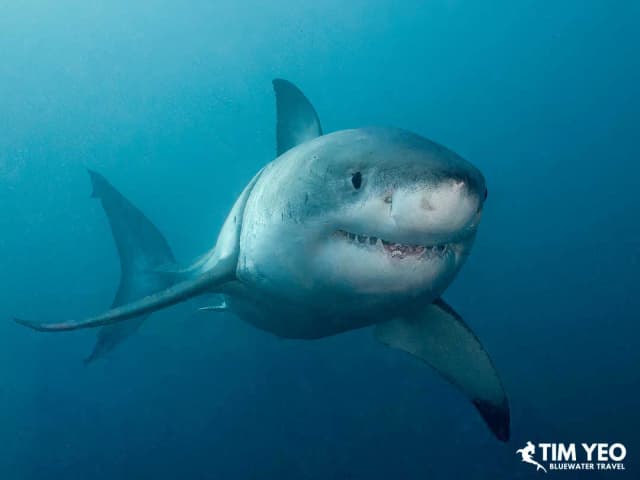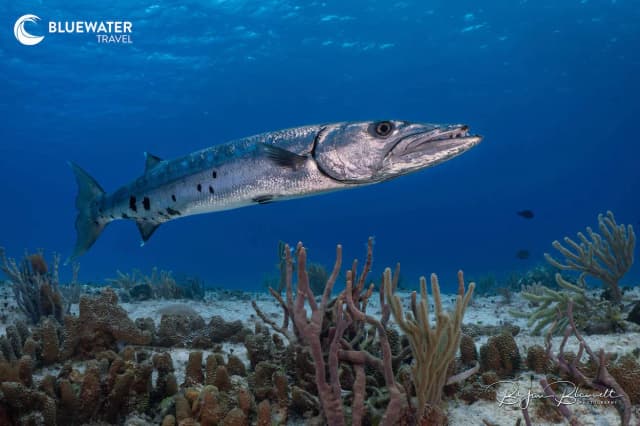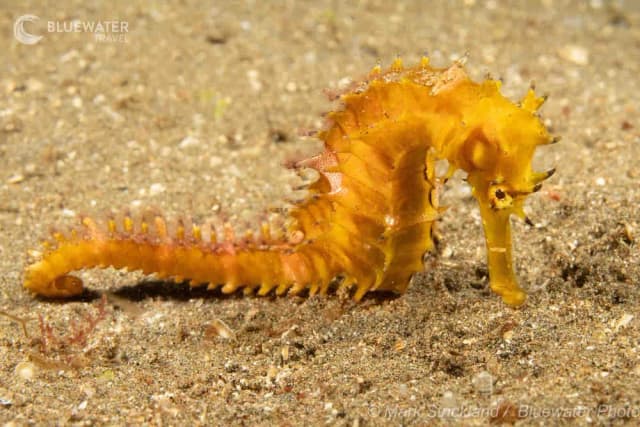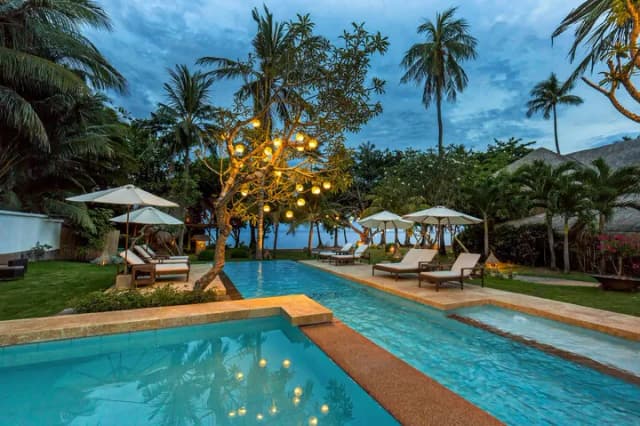Fiji Trip Report 2022
A Bluewater Travel Underwater Photo Workshop
Words by Craig Dietrich, Images by Craig Dietrich & Guests


In October, a group of sixteen adventurers joined Bluewater Travel’s Trip Leader, Craig Dietrich, for ten days in fabulous Fiji.
After flying into Nadi International Airport, we drove for approximately two and a half hours to our first destination, the Pearl Resort in Pacific Harbour. The Pearl would be our home for three days, with shark diving being the focus of the first part of the trip. The shark dives were incredible, bringing in a variety of sharks: lemons, blacktip reefs, bull sharks, and the biggest nurse sharks I’ve seen to date. The sharks were also plentiful, with up to twenty sharks swimming around us at a time but the dive operators were skilful, and the dives were very well run.



(L) Colorful Reef By Paul Gruner. (M) Clown Fish By Dan Bishop. (R) Sharks By Cindy
While at the Pearl, we also had an opportunity to dive our first of Fiji’s famous reefs. This was my first time diving in Fiji, and the reefs definitely lived up to their stellar reputation! The reefs were very healthy: the corals every color of the rainbow and there were thousands of fish. We were hopeful that every dive could be as beautiful as this one was.



(L) Colorful Reef & (M) Shark By Craig Dietrich. (R) Star Fish By Dan Bishop
Immediately following our reef dive, we headed to the Volivoli Beach Resort, which is situated on the Bligh Waters (named for Lieutenant William Bligh, of “Mutiny on the Bounty” fame). The Volivoli is very photographer friendly, with its own secure camera room (and air pressure on each station). If I were to have imagined a resort in Fiji, the Volivoli met every expectation of a tropical paradise. After a welcome luau-type dinner, we were excited for days of amazing diving.
While the island and the resort were paradise, Mother Nature was not as accommodating. Rough waters and limited visibility were the story until the third day when we were finally able to get out to the Vatu-i-Ra Passage, a marine park where we experienced some of the most beautiful coral reefs on Earth. Both the macro and the wide-angle photographers were happy with the diversity of life on the reefs. And everyone loved the explosion of colors coming from the plentiful soft and hard corals.


(L) Banded Sea Krate By Dan Bishop. (M) Shark & (R) Reef By Craig Dietrich.
On our final night at the Volivoli we were treated to a second luau-type dinner which included local Fijians singing traditional songs. It was a great way to celebrate the end of a fantastic adventure.
Every dive following brought more of the same: jaw dropping seascapes, clear water, and life everywhere. In other words: every diver’s dream trip.






Guest Images By Pam Sichting, Wally Greene, Jennifer Nevius, Paul Gruner, & Deana Nickenson
Check out our full list of Fiji Dive Resorts.

